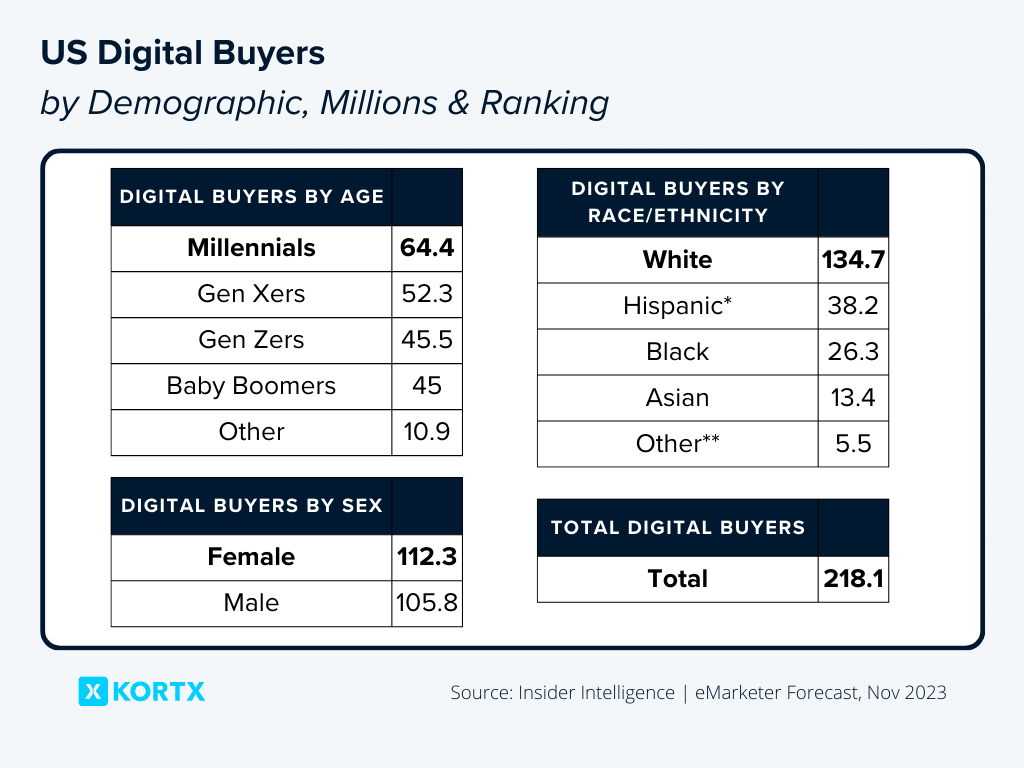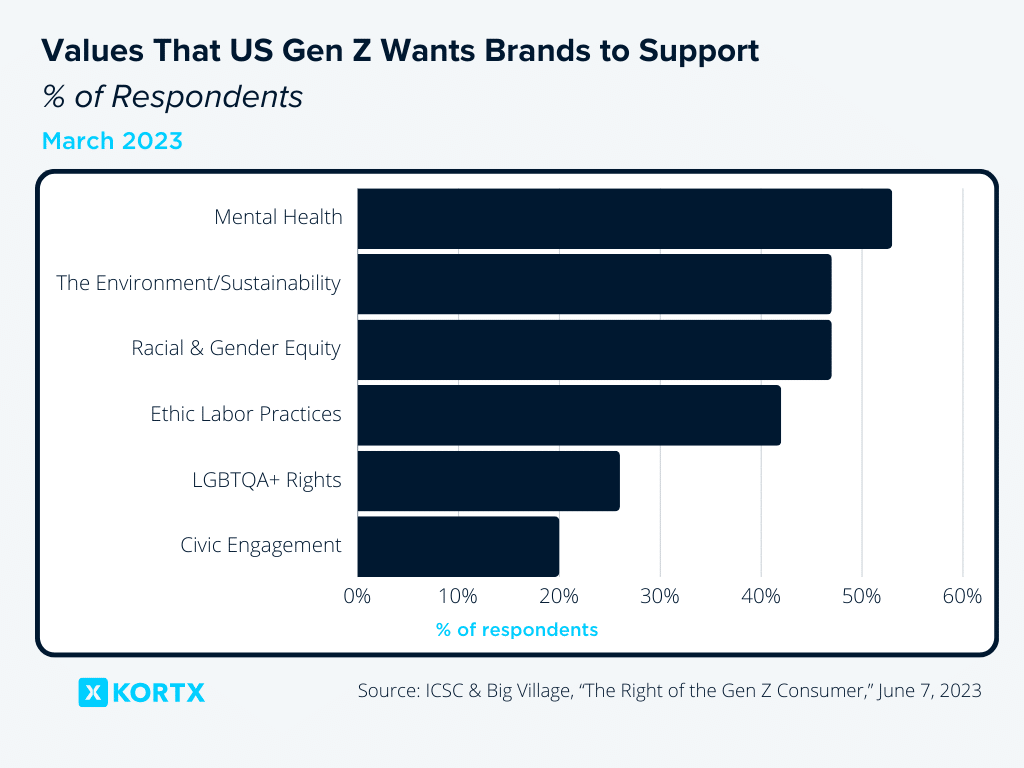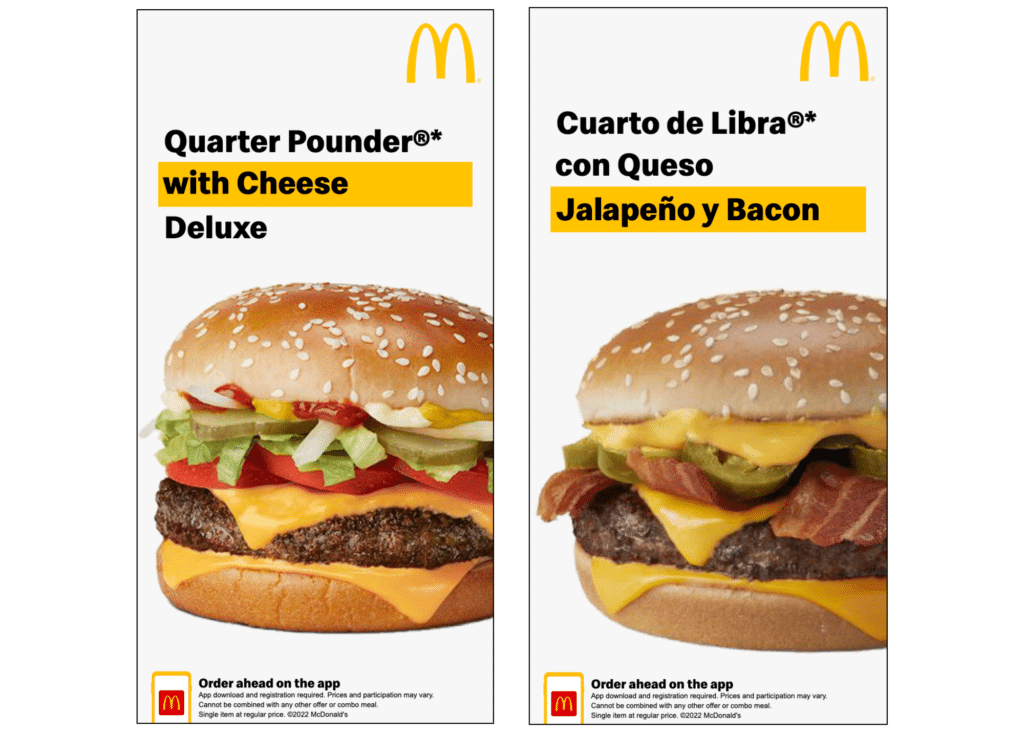Experiences refined for people
Experiences refined for people
By 2042, over 50% of the U.S. population will consist of people from minority backgrounds.
Embracing diversity is essential for advertising success and a fundamental responsibility of any brand.
Review inclusive multicultural and diversity marketing trends to refresh your strategy and stay competitive in 2024.
In 2020, research indicated that over six out of ten Americans consider diversity in advertising crucial. Over 40% surveyed wanted to witness increased racial diversity in advertisements.
The advertising industry faces a troubling decline in diversity. In 2023, people of color comprised only 30.8% of industry employees, compared to 42.2% ethnic diversity in the US population.
Despite strong DEI commitments in 2020 and 2021, many companies have shifted focus to cost-cutting, resulting in a waning diverse workforce and advertising output, eroding consumer trust.
Workforce Imbalance in Advertising and Marketing
Companies in the top quartile (25%) for ethnic representation are 39% more likely to outperform. Conversely, companies with low ethnic and gender diversity are 66% less likely to outperform, making lack of diversity costly.
Diversity is crucial to maintaining a loyal customer base. Companies committed to DEI significantly outperform those that aren’t. 77% of respondents are willing to abandon brands that reverse their support for diversity.
Companies with diverse workforces are significantly more likely to outperform their peers, while those lacking diversity risk losing consumer loyalty and underperforming. To stay competitive and resonate with a diverse audience, invest in inclusive hiring practices and reflect this diversity in ad campaigns.
How does KORTX strive to create a multicultural workplace?
“At KORTX, diversity and inclusion are woven into the fabric of our company culture. As a minority-owned business, we celebrate the varied backgrounds, cultures, and perspectives of our team members. Our approach to diversity is organic, prioritizing respect and inclusivity in the workplace and beyond, fostering an environment where everyone’s unique ideas are valued. We are committed to continuously expanding our diverse team, focusing on daily interactions to promote diversity, rather than isolated programs, ensuring that our foundation of varied ages, genders, and cultures continues to strengthen as we grow.”
Thanks to ease of access, buying online is one of the few digital habits that cuts across age, gender, and ethnicity. Over three out of four internet users will make at least one online purchase every year through 2027.
Growing adoption is driven by convenience and affordability. Not all categories are bought online equally. Most consumers purchase groceries offline, while beauty products are more often purchased online.
Generational differences also affect the adoption of new e-commerce trends like livestream shopping.

Despite being smaller demographic groups, Black and Asian shoppers have the highest rate of online shopping adoption among non-White users.
Clothing is the top category across age and gender. Over half of respondents in each group reported buying clothing online at least once in the past month. Shoppers aged 35 to 54 are the most likely to buy clothing online, due to greater disposable income and family purchases.

When shopping online, Gen Z expects same-day, next-day, or other omnichannel delivery options like BOPIS (buy online, pickup in-store). Millennials show more patience, but nearly 60% of both groups are willing to pay for same-day delivery, more than Gen Xers and Boomers.
Online shopping is growing across all demographics, with some purchases completely online (like clothing) and others still in-store (like grocery). Brands must develop omnichannel retailing strategies like personalized customer experiences, optimize mobile shopping, and integrate advanced technologies like AI and AR to enhance both online and in-store interactions for all shoppers.
How will diversity & inclusion expectations change for marketers in 2024?
“Following disruptions in 2021 and 2022, audiences and brands alike will expect to see more explicit proof of commitment to ongoing changes and investment in these audiences. Brands that are transparent about efforts, spend, and changes made are more likely to make an impact. Those who chose to explore old PR models or one-time commitments will not succeed.”
Younger generations dislike ads mimicking popular trends but appreciate genuine humor and sincerity.
70% of adult Gen Zers and 75% of millennials believe brands with a large target audience should promote diversity and inclusion. The expectation among Gen Xers and baby boomers is slightly lower but still significant, with about two-thirds supporting this idea.

Gen Zers seek discovery and delight in shared experiences. Brands can connect with this generation through dynamic, personalized media experiences that add joy and value to their shopping journey, like interactive CTV ads.
Dynamic ads, also called dynamic banner ads or dynamic creatives, are ads that adjust their content manually or automatically based on factors like browser language. An advanced version, Dynamic Creative Optimization (DCO), uses real-time data analysis to personalize each ad automatically for maximum relevance.
Example: McDonald’s, Dynamic Browser Language

This dynamic McDonald’s ad mockup offers both English and Spanish versions, automatically displaying in the user’s browser or mobile device language.
DCO personalizes ads in real time based on a user’s specific data. This means viewers see content, promotions, and calls to action that are most likely to resonate with them, leading to greater engagement and conversions. Also, with Third-Party cookie deprecation, DCO’s ability to use First-Party data and contextual signals means messaging remains relevant.
By embracing DCO, advertisers can create dynamic creative that cuts through the noise and delivers a more relevant experience for each viewer, ultimately driving better campaign performance.
Our ad creatives dynamically change based on a user’s browser language, serving them relevant ads more likely to resonate & convert.
Last year, brands celebrated Black History Month by spotlighting Black-owned businesses, donating to racial equity nonprofits, and launching collections honoring Black culture. Campaigns included Target and Old Navy promoting Black creators, and tech giants like Apple and Google incorporating cultural themes into their products.
Calvin Klein announced its 2024 “This is Love” Pride campaign starring Cara Delevigne and has committed $240,000 to NGOs (non-governmental organizations) dedicated to LGBTQIA+ equity and safety.
However, brands are shifting towards meaningful, year-round engagement with multicultural audiences. Instead of token gestures during cultural observances, companies now focus on initiatives that support diverse communities through internal projects, significant donations, and partnerships with relevant influencers and organizations.
Efforts like the Fifteen Percent Pledge show a shift toward long-term commitments beyond performative actions, aiming to correct underrepresentation in retail and other sectors. Major retailers, including Macy’s, Sephora, and Nordstrom, increased their selection of Black-owned brands after committing to it.
Brands that prioritize diversity, equity, and inclusion (DEI) initiatives throughout the year, not just during cultural heritage months, demonstrate a genuine commitment to these values, which is increasingly important to consumers, especially younger generations.
Why is it crucial for brands to embrace multicultural marketing as an ongoing commitment rather than a seasonal trend?
We are tired of the old narratives with really unattainable beauty standards, you know, in which all models just conformed to the very, like, eurocentric beauty standards. And it was, you know, basically as though only thin, white, blonde women exist in a lot of the fashion and beauty space. We’re tired of that. It just doesn’t make sense anymore.
This [multicultural marketing] is something that we need to do all year round, and we need to do it because it’s right. So we need to show the world as it is because that’s representative and accurate, but also because brands have a role to play in leaving the world better than it was when we found it.
And I think for other people who are increasingly concerned about climate change and structural racism and all of these, you know, really potentially very scary ongoing issues, brands have a role there to support people and to say, like, we see, you see the issues that you care about and we’re going to be here and partner with you to help tackle them. So brands can sort of position themselves now as, like, allies, friends, people that are onside and take away some of that anxiety and worry and fear that so many of us are feeling.”
Digital audio advertising is growing steadily, though slower than video advertising. Programmatic audio advertising is expected to grow by 17.2% in 2024, reaching $1.8 billion, while programmatic podcast audio is projected to grow by 33.5% this year.
Spotify is catching up to Pandora in digital audio ad share, driven by investments in content and access to select programming. iHeartMedia remains steady with a 10% share of digital audio ad revenues.
New audio formats are emerging, including the potential for connected TV (CTV) to serve audio ads and chatbots empowered by generative AI to capture some search advertising dollars.
Audience preferences depend on generational differences. For example, African American Gen Z and Millennials prefer SoundCloud and Shazam. Hispanic and Asian Gen Z audiences love SoundCloud, followed by Spotify.
Advertisers should focus on the unique preferences of diverse audiences, leveraging platforms like SoundCloud, Shazam, iHeartRadio, Pandora, Univision, and NPR to reach multicultural consumers across different age groups.
✏️ Case Study: Home Depot Retool Your School
KORTX and The Home Depot have partnered to support community initiatives through Cross-Platform Displays and Native ads. Since 2020, KORTX has supported Retool Your School from building program awareness to the winner announcement ceremony, achieving an average CTR of 0.25% and a peak CTR of 0.49%.
CTV devices boost ad receptivity. 58% of Black/African American viewers report being receptive to CTV ads, 55% of Hispanic/Latino viewers, and 49% of Asian viewers.
Music and sports content drive longer viewing times due to their high cultural relevance. Black/African American and Hispanic/Latino viewers highly value both, while Asian viewers especially value music.
Integrating CTV with digital audio advertising will be an increasingly popular strategy. While viewers enjoy music videos on CTV, digital audio ads on platforms like Spotify and Pandora can reinforce messages, creating a cohesive and immersive brand experience.

To effectively engage with multicultural audiences, prioritize culturally relevant content on CTV, especially music and sports. This means understanding and respecting the nuances of each demographic’s preferences, such as the strong affinity for music among Asian viewers, and tailoring ad content accordingly.
AI can analyze diverse information quickly, allowing marketers to create ads and campaigns that feel personal and relevant to everyone.
For example, when targeting programmatic ads to specific regions, it’s important to use the right key phrases and idioms for engagement, not just direct 1:1 translations. AI tools like Google’s Gemini can do this. This is especially crucial for native, display, and video ads where a few well-chosen words can capture the user’s attention.
Also, AI can target ads based on users’ locations and interests, such as showing an ad for a new iPhone when a potential customer is near an Apple store.
OneUnited Bank’s WiseOne AI tool provides tailored financial insights to help Black customers improve their financial health, demonstrating AI’s potential to address specific community needs and drive social equity.
However, a significant challenge lies in ensuring that AI systems are free from bias. Studies have shown that AI models can perpetuate existing biases if not properly trained on diverse and representative data.
AI can enable personalized and culturally relevant campaigns, but its success hinges on the ethical development and use of AI systems to ensure inclusivity and mitigate bias.
📚 Related article: AI Has a Diversity & Inclusion Problem
Learn how AI can perpetuate systemic racism and sexism across multiple industries & applications.
52% of US adults agree that ads often portray men and women in traditional gender roles. They also prefer brands that hire spokespeople who resemble them, a preference especially strong among Black consumers.
Women and Gen Zers are more likely to trust influencers, with 50% of women and 58% of Gen Zers reporting a medium-to-high level of trust in influencers for social commerce purchases.
Also, at least 60% of U.S. consumers aged 18 to 44 favor brands hiring LGBTQ spokespeople, while less than half of those aged 45 and above express the same approval.
This is true for audio content as well, particularly podcasts.
KORTX collaborated with Ford for a #BlackHistoryMonth campaign, showcasing Emeline King, Ford’s first Black female transportation designer. Our ad aimed to inspire and empower future generations in the currently male-dominated automotive industry.
Consumers prefer brands with relatable spokespeople, including influencers who reflect their demographics and values. Maintaining strong connections with trusted influencers can enhance engagement and trust.
How have consumer expectations shifted regarding representation in marketing, and what specific changes do they want to see from brands?
“Marketing has been really White-centric for years and years, and a lot of companies have behaved as though only White people can model or purchase products, or engage with their services. But currently, we expect to see brands showing us the world as it is. This looks like racially diverse models and products that can be used by everybody, like beauty products that work on lots of different skin tones.
I think that that is coming from Gen Z really, really valuing a commitment to social justice and valuing brands that are authentic and credible and want to make the world a better place. And I think that’s also coming from a place of good business. It is better business to make products that work for everybody and to tell stories that can appeal to a growing number of people.”
2024 demands an authentic embrace of diversity, equity, and inclusion (DEI). Brands must prioritize understanding diverse audiences, tailoring omnichannel experiences, and leveraging AI ethically for personalized campaigns. Long-term commitment to DEI initiatives, not token gestures, will build trust and loyalty among increasingly diverse consumers. By adapting to these shifts, advertisers can thrive and contribute to more inclusive media campaigns.
Partner with us to create authentic, inclusive marketing strategies that drive engagement & foster lasting connections with diverse communities.
Drew Pytel is a Senior Account Manager at KORTX. He has extensive experience researching and creating strategies for multicultural campaigns. He enjoys golf, bourbon, and being active with his wife and 3 kids.
From us to your inbox weekly.